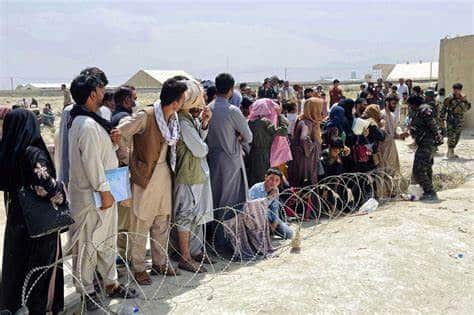
From Crisis to Cure: the Afghan Refugee Dilemma, Security, and Technological Interventions
بحران پناهجویان افغان: چالشها و راهکارهای تکنالوژیکی
بحران پناهجویان افغان یکی از بزرگترین موارد آوارگی در تاریخ معاصر است که ناشی از دههها جنگ، فروپاشی اقتصادی و بیثباتی سیاسی است. این مقاله بر موج چهارم پناهجویان افغان تمرکز دارد و به دو گروه آسیبپذیر نوظهور میپردازد: زنان و دخترانی که برای فرار از محدودیتهای جنسیتی تحت حکومت طالبان به پاکستان پناه میبرند و نیروهای نظامی وابسته به دولت سابق افغانستان. در حالی که پاکستان میزبان میلیونها پناهجوی افغان است، تهدیدات امنیتی غیرسنتی مانند تروریسم و تنشهای مرزی بحران را تشدید میکنند. نویسندگان این مقاله راهکارهایی را پیشنهاد میدهند که با استفاده از فناوریهای پیشرفته – به ویژه هوش مصنوعی (AI) و بلاکچین – مدیریت پناهجویان بهبود یابد، فرآیندهای حقوقی ساده شوند و دسترسی به خدمات اساسی مانند سلامت از راه دور و آموزش آنلاین گسترش یابد.
هوش مصنوعی میتواند مدیریت لحظهای دادههای پناهجویان را امکانپذیر کند و از طریق ردیابی دقیق، خطرات مربوط به جعل هویت را کاهش دهد، در حالی که بلاکچین با ثبت غیرقابل تغییر سوابق، از اسناد هویتی و حقوقی پناهجویان محافظت میکند. این فناوریها میتوانند شکافهای اساسی در حوزههایی مانند آموزش، بهداشت و توزیع کمکهای بشردوستانه را پر کنند و آسیبپذیریهای کلیدی پناهجویان افغان در پاکستان را برطرف نمایند. مقاله پیشنهاد میکند که از طریق ایجاد پایگاه داده بیومتریک متمرکز که توسط دفتر کمیساریای عالی پناهندگان سازمان ملل (UNHCR) مدیریت میشود، شفافیت و کارآمدی در تخصیص منابع بهبود مییابد. همچنین، سیستمهای مبتنی بر هوش مصنوعی میتوانند جریانهای مهاجرتی را پیشبینی کرده و پاسخهای بشردوستانه را بهینه کنند و فشار بر زیرساختهای محلی را کاهش دهند.
با این حال، نویسندگان تأکید میکنند که مداخلههای فناورانه به تنهایی نمیتواند بحران پناهجویان را حل کند. اراده سیاسی، همکاری بینالمللی و حکمرانی اخلاقی برای تضمین رفتار عادلانه و منصفانه با پناهجویان افغان ضروری است. در حالی که فناوری میتواند کارآمدی را افزایش دهد و راهکارهای نوآورانه ارائه دهد، باید با چارچوبهای قانونی قوی و اقدامات حفاظتی همراه باشد تا پناهجویان از تبعیض، آزار و اخراج محافظت شوند. مقاله در نهایت خواستار رویکردی متوازن است که پیشرفتهای فناورانه را با اصلاحات سیاستی و تلاشهای بشردوستانه ادغام کند تا استراتژی پایدار و بلندمدتی برای حل بحران پناهجویان افغان شکل گیرد.
مقاله کامل را در لینک زیر بخوانید:
The Afghan Refugee Crisis: Challenges and Technological Solutions
The ongoing Afghan refugee crisis represents one of the most significant displacement events in modern history, driven by decades of conflict, economic collapse, and political instability. This article focuses on the fourth wave of Afghan refugees, highlighting two emerging vulnerable groups: women and girls fleeing gender-based restrictions under the Taliban, and military personnel associated with the former Afghan government. As Pakistan grapples with hosting millions of Afghan refugees, non-traditional security threats like terrorism and border tensions exacerbate the situation. In response to these challenges, the authors propose leveraging advanced technologies—specifically artificial intelligence (AI) and blockchain—to improve refugee monitoring, streamline legal processes, and expand access to essential services such as telemedicine and online education.
AI can facilitate real-time management of refugee data, ensuring accurate tracking and reducing the risks of identity fraud, while blockchain offers secure and immutable record-keeping to protect refugees’ identities and legal documents. These technologies could help bridge critical gaps in education, healthcare, and aid distribution, addressing key vulnerabilities that many Afghan refugees face in Pakistan. The article argues that by creating a centralized biometric database managed by the UNHCR and local offices, Pakistan can improve transparency and efficiency in resource allocation. Additionally, AI-driven systems can predict migration flows and optimize humanitarian responses, mitigating the pressures on local infrastructures.
However, the authors emphasize that technological interventions alone cannot resolve the refugee crisis. Political will, international cooperation, and ethical governance are essential to ensure the fair and just treatment of Afghan refugees. While technology can enhance efficiency and provide innovative solutions, it must be accompanied by strong legal frameworks and protective measures to safeguard refugees from discrimination, harassment, and deportation. The article ultimately calls for a balanced approach—integrating technological advancements with policy reforms and humanitarian efforts—to create a sustainable, long-term strategy for addressing the Afghan refugee dilemma.
Read the full article at the link below:
Source
- Tags
- Oceania



